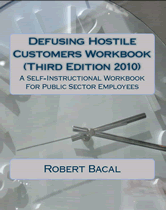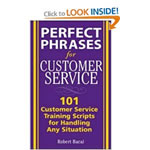
Declaring War On Unnecessary Work
Work never seems to go away...work never seems to reduce, unless some catastrophic event occurs to downsize an organization. But how much work is done in your organization that no longer serves any purpose, or doesn't serve the purpose for which it was designed? Maybe it's not a bad idea to re-examine some of the work that is undertaken.
Genesis of Unnecessary Work
Usually non-functional work activities and procedures don't start out that way. At some point in time there was a function or need that had to be filled, and someone developed what appeared, initially, to be a sensible solution. That function or need may have been based on personal preference, (ie. reading all Branch correspondence), or it may have been a more legitimate business function (collection of client data).
The solution or procedure was then implemented, and over time it became an institutionalized part of the organization's activities, and as such, became above scrutiny. It continued, whether the need continued or not.
Ghosts of People Past
The odd part of unnecessary work is that often the procedure outlasts the person who wanted it. The initiator may be long gone, and in fact, nobody remaining may even recall why it was done, or is being done. Inertia dictates that organizations keep doing things the same way until some force emerges to change it. That force, the force to leave the ghosts behind, must come from leaders in the organization.
Role of The Leader
In declaring war on unnecessary work, the leader can play a number of roles. First is setting the appropriate climate for questioning procedures. Since no leader is in a position to know all of the work undertaken, it is critical that the leader make it possible for employees to question or challenge procedures. It must be invited, and it must be accepted and nurtured.
Second, the leader can play the initiator role, setting up a program to examine procedures, by working with the employees in the organization.
By leading the journey to identify unnecessary work, you can gain efficiencies while at the same time, improving employee engagement.





